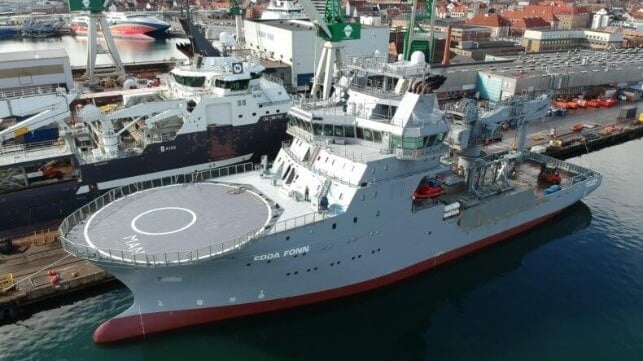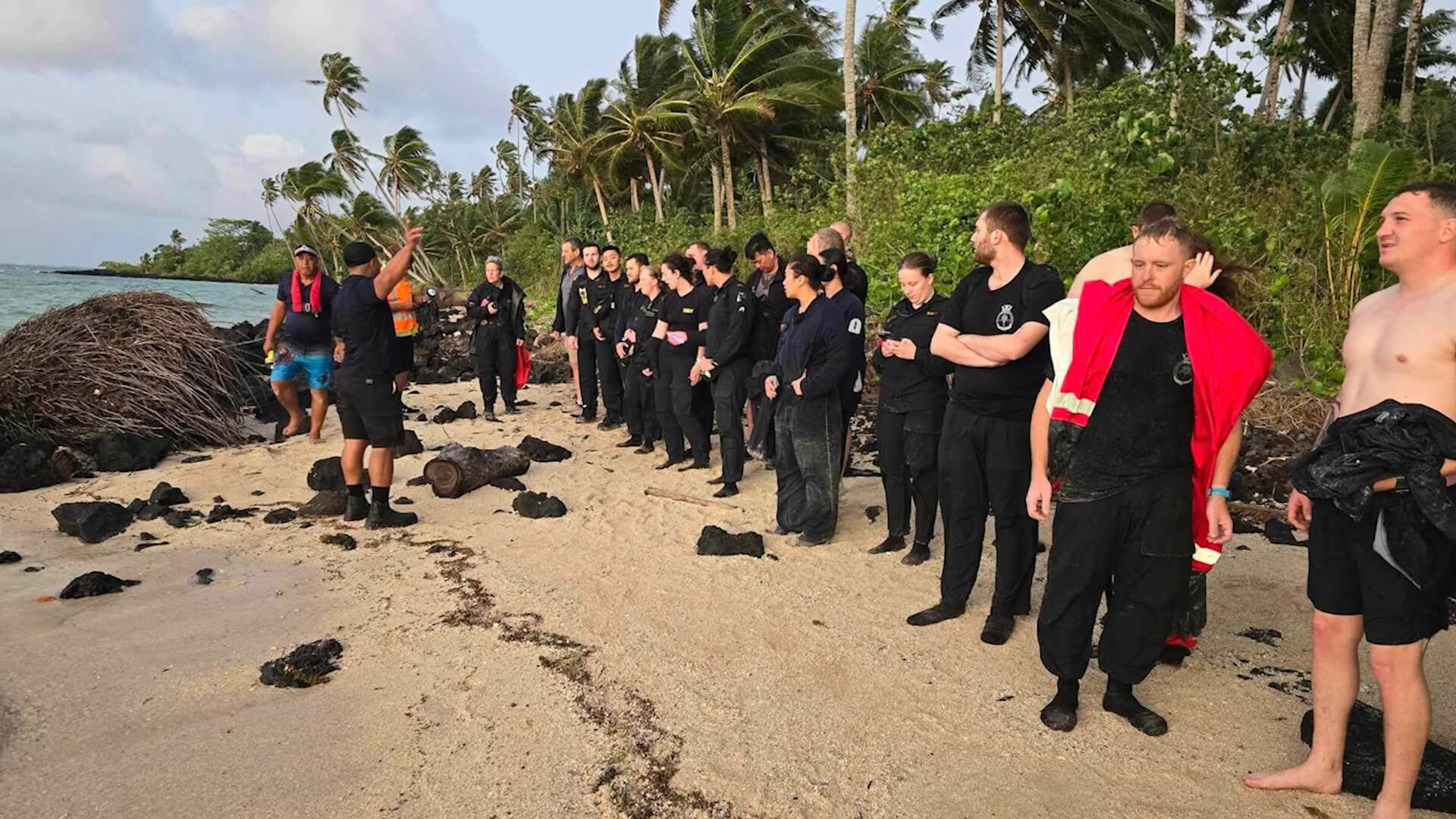Sunken NZ Navy Ship Only Had Diesel Aboard, Reducing Spill Risk

The Royal New Zealand Navy has confirmed that the lost survey ship HMNZS Manawanui only had diesel fuel aboard, reducing the risk of environmental impact compared to heavier classes of fuel. Diesel tends to dissipate quickly in warm water, unlike thick and tarlike bunker fuel, which can foul shorelines and linger in sediment for years.
On Saturday evening, the research ship HMNZS Manawanui grounded off the southern coast of the island of Upolu, Samoa. The ship was carrying out a hydrographic survey and was operating about one nautical mile from shore in rough and windy conditions. Under circumstances that are still being investigated, it ran aground, listed, caught fire and sank.
— Dave Poole (@pooliecoast) October 6, 2024
Here’s our video of the end of HMNZS Manawanui https://t.co/I5A8KOV7nJ pic.twitter.com/uscYuCuYno
Though the Royal New Zealand Navy has refused to comment on causal factors, Defense Minister Judith Collins said Monday that it appears the ship lost power before drifting aground.
All crewmembers were safely evacuated with help from Samoan responders, and 14 out of 75 sustained minor injuries. As of Monday, all have been repatriated to New Zealand.
Rear Adm. Garin Golding told local media in New Zealand that the Manawanui is carrying about 950 tonnes of diesel fuel, along with smaller quantities of other petroleum products. The New Zealand Defence Force confirmed that the ship had no hazmat aboard in significant quantities, beyond what would be found on a typical merchant vessel.
"Our efforts are going to be on supporting the Samoan government with environmental impacts," said Rear Adm. Golding.
A sheen and a petroleum smell have been observed at the scene of the sinking, and local residents have expressed serious concerns about the impact on tourism and local fisheries. "Subsistence fishing is the largest and most important fishing activity in Samoa. You have many ordinary people relying on the ocean for their living, much more so than other more developed Pacific countries," explained Dr Iati Iati of Victoria University, speaking to The Post.
The government of New Zealand will shave some amount of financial exposure for the cleanup cost: Finance Minister Nicola Willis confirmed Monday that - like virtually all naval vessels - Manawanui was not fully insured by a private party, though it did have some amount of salvage and pollution-response coverage. As a practical matter, the government vessel was not particularly insurable, she said. "Even if policies like that are purchased, they’ve got such limitations and exclusions and conditions that they’re not really a viable product," Willis explained.
New Zealand's defense forces will have to bear the full cost of replacing the vessel itself. Manawanui was purchased secondhand from Ostenjo Rederi during the offshore downturn, and the US$90 million price paid would be higher in today's market.
So far, the Royal New Zealand Navy has resisted requests for more details about the cause of the casualty. A formal court of inquiry has been convened to interview the crew and gather information, and Rear Adm. Golding insisted Monday that the service would not get out ahead of the board's investigative process.
That process will include a series of ROV dives to examine the wreck site, which is at a depth of somewhere between 35-150 meters. The ship went down at the edge of a steep dropoff and its exact resting place is not yet certain. New Zealand Defence Minister Judith Collins emphasized that the exact depth of the wreck makes a "huge difference" in the cost and practicality of salvage.
In a televised interview on Monday morning, New Zealand Prime Minister Christopher Luxon lauded the efforts of the crew. "In really rough sea, they had to abandon ship, get into small boats, navigate a reef, some got capsized," he said. "We should be so incredibly proud of our New Zealand Defence Force personnel."

Survivors from the Manawanui on shore after abandoning ship (Samoa Fire and Rescue)
